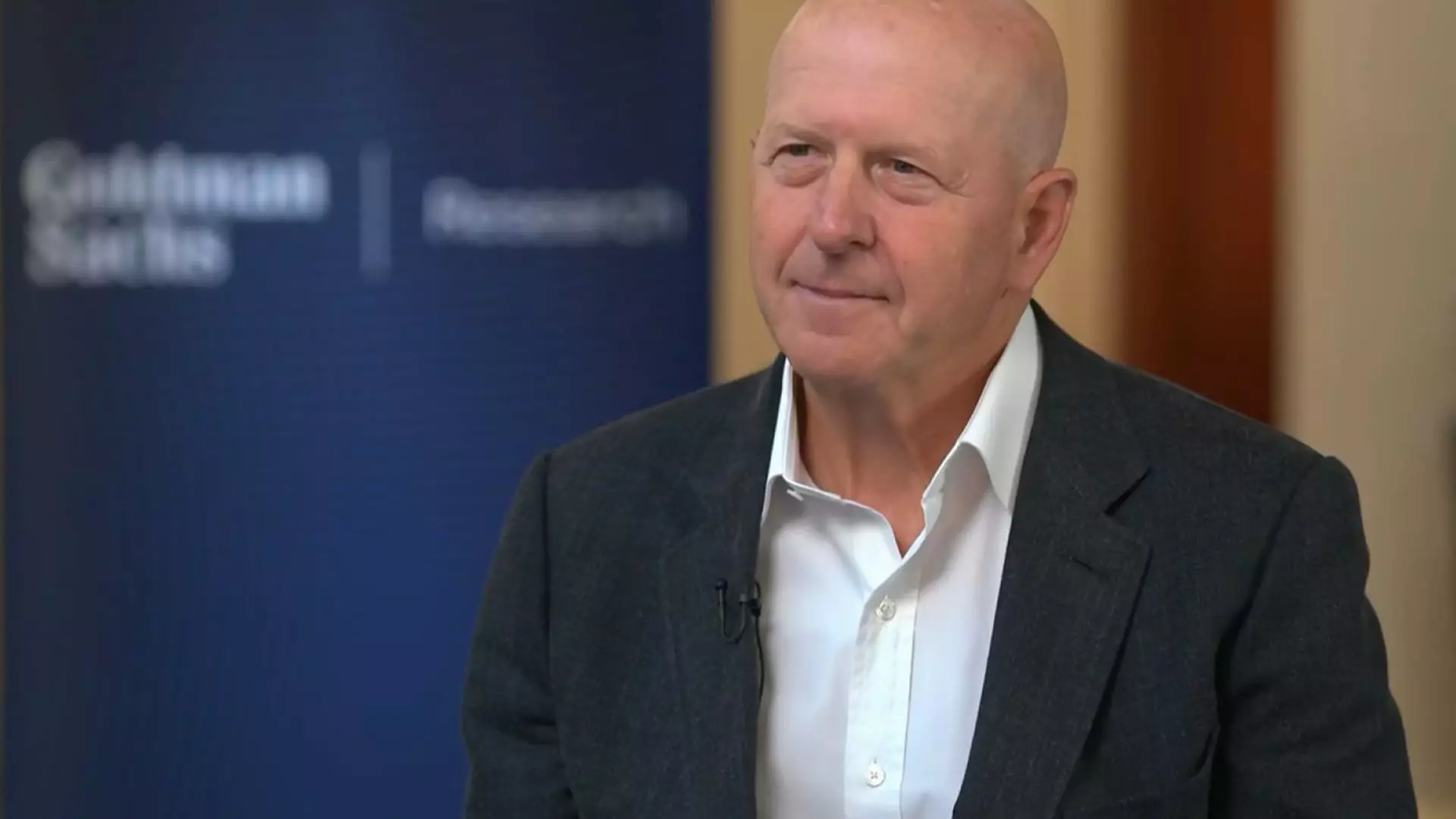Goldman Sachs has, yet again, managed to impress the analysts with its first-quarter earnings, which have skyrocketed beyond expectations thanks to a boom in equities trading. On the surface, the numbers seem like a triumph. The bank reported earnings of $14.12 per share against an expected $12.35, with total revenue soaring to $15.06 billion compared to the anticipated $14.81 billion. Profit surged by 15% year-on-year, turning the heads of investors and analysts alike. But beneath this façade of prosperity lurks a tale imbued with inconsistencies—one that echoes the market’s quagmire in the unpredictable era of tumultuous global politics.
While Goldman’s equities trading revenue soared by an astonishing 27%, raking in $4.19 billion—a figure that outperformed analysts’ expectations by a whopping $540 million—this surge feels more like a lifeline thrown into a raging sea than a signal of robust financial health. The 10% rise in total revenue for Goldman’s global banking and markets division is undoubtedly an achievement; yet, one must wonder: Is this growth sustainable in an environment defined by uncertainty, primarily arising from political machinations?
Declines and Weakness: The Other Side of the Coin
Despite the towering success in equities, the same earnings report revealed some exceptionally troubling signs for the firm. The fixed-income division barely scraped together a 2% increase in revenue, reflecting a lack of vibrancy in that sector. With revenues of just $4.4 billion, it fell short of the projected $4.56 billion mark. Additionally, the investment banking fees plummeted by 8% to $1.91 billion, trailing behind forecasts of $1.94 billion. As these declines signify, not everything is rosy in the Goldman Sachs garden.
Moreover, Goldman’s asset and wealth management division witnessed a 3% drop in revenue, settling at $3.68 billion, edging just below estimates. The phrase “significantly lower” revenue tossed around in the earnings call cannot be taken lightly. It suggests that the firm may be grappling with diminishing returns on its investments, a red flag for any major financial institution.
Political Uncertainties and Market Responses
In an increasingly interconnected world where capital flows are dictated not just by market forces but by political decisions, Goldman’s CEO David Solomon pointedly acknowledged the tumult caused by President Trump’s escalated trade conflicts. This admission is noteworthy; it signifies an awareness of the external factors influencing market dynamics and the unpredictability they introduce. While Solomon expressed confidence in the bank’s capability to support its clients through a “markedly different operating environment,” one cannot help but sense an underlying trepidation in his words.
The immediate market response was predictably favorable, with shares climbing more than 3% in premarket trading. Yet, one might argue: is the euphoria merely a flash in the pan? With Goldman shares down 14% for the year up until Friday, are we witnessing a market bounce or a numbing retreat? The veracity of the reported earnings raises questions about whether the surge in equities trading is a fragile bloom in an otherwise stifled ecosystem.
The Broader Implications: A Cautionary Outlook
As Goldman Sachs sidesteps the pitfalls faced by its competitors like JPMorgan Chase and Morgan Stanley—who also reported booming equities trade profits due to the volatility ignited by political uncertainty—one must ponder the ramifications for the banking sector as a whole. Will this wave of fleeting success in equities continue, or are we witnessing a precarious balancing act that could collapse given any significant negative trigger?
The numbers may mask discomforting truths about the bank’s diversified income streams, and a reliance on trading revenues could ultimately prove to be a double-edged sword. Investors should remain vigilant, parsing through the optimistic headlines to uncover the nuanced realities that suggest a landscape influenced by more than mere trading gains. In an era marked by volatility, the ability of any financial institution to navigate these treacherous waters hinges not just on profits but also on the capacity to adapt to an ever-evolving political climate. The question looms large: how long before this high-wire act tumbles into the abyss?

